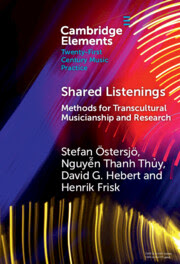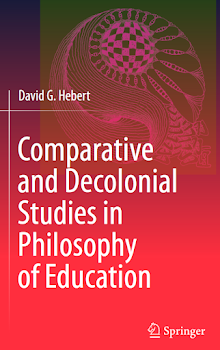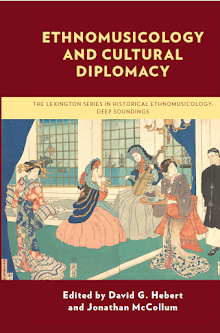12/26/13
What is Sociomusicology?
The interpretation
of words is inevitably subjective, for meanings are constantly evolving, negotiated through discourse across each sector of society. Still, it has now
been over six years since I decided to start this blog called SOCIOMUSICOLOGY,
which at this point has over 72,000 page views, so it now seems a good idea to explain my understanding of what this word can mean.
Sociomusicology
has been discussed in various ways by music scholars. Some view sociomusicology
as a specialized subfield of sociology - essentially the “sociology of music” -
while others view it as a particular form of ethnomusicology. Comparing the
sociology of music with ethnomusicology, Keller observed a “difference in
expertise and competence between the two disciplines” that “derives from their
different historical roots” (Keller, 1986, p.179). Personally, I am equally happy
with both understandings of this term, which is why I use sociomusicology here,
but I also include a subtitle “musical arts – education – social sciences” on
this website to suggest some more specific interests. My main fields of
academic study are music teacher education and ethnomusicology, so I examine
music teaching and learning (and the institutionalization of music) from a
global perspective, and I am also very interested in developing new approaches
to research that are informed by recent developments in philosophy and new
technologies.
In my view,
sociomusicology can generally be seen as a form of musicology that proceeds
with the intention of producing outcomes that have a social impact, or findings
of relevance to practitioners, such as musicians and music teachers (from
studies of music ensembles, music learning strategies, and performance
techniques, for example). Sociomusicology can also be understood as a specific
form of applied ethnomusicology, marked by an openness to research
methodologies that may sometimes be distinct from ethnographic fieldwork, such
as historiography, computational analysis, practice-based research, and arts
policy studies.
I agree with
Norman Stanfield that it is a bit regrettable ethnomusicology was not called “sociomusicology”
all along, for ethnicity is merely one dimension of the array of social themes commonly
explored in the field usually called “ethnomusicology”. Interestingly, it is
really “musicology” - with its traditional focus on composers of “common
practice” European art music - that tends to be a specific kind of
ethnic-musicology, while “ethnomusicology” tends to be the more holistic field,
embracing all kinds of music everywhere in the world. When viewed from the
perspective of other fields – such as linguistics or drama – this situation in
the academic disciplines of music surely must seem counterintuitive. Still,
this is all changing nowadays, as the division between musicology and
ethnomusicology now seems to be diminishing.
Here are some
examples of how scholars in the past have discussed sociomusicology:
According to
Barbara Lundquist (1982), “Sociomusicology focuses
on the study of music in its social context. Therefore sociomusicology is
closely related to ethnomusicology as well as psychomusicology and historical
musicology. Its perspective affects aesthetics and criticism. It deals with
concerns that often overlap one or another of these areas of study.”
Lundquist also
writes the following:
“In general terms the bibliographical research revealed
that since the early 1900s there has been a marked increase in
sociomusicological research all over the world. The variety is quite
overwhelming, the focus broad. Procedures range from descriptive, ethnographic
studies to empirical ones; from the application of mathematical techniques to
entirely speculative language. Everything from the role of song texts or
particular genres in revolutions to economic manipulation in the music industry
is examined. Studies analyze the social interaction between conductors and
musicians in orchestras, at times using such studies to stand for similar
status-bound, product-oriented relationships in society. They examine the
social interaction in recording studios which affects music as business, as
well as the role of music in changing the social behavior of children and
adults. The use of music to control attention during television programs is
studied, as is the use of music alone or with drugs in cross-cultural
comparisons of ritual. The socialization of musicians has been analyzed along
with elements in the acculturation and enculturation in music of groups of all
sizes, from all over the world. Some studies examine aspects of music which
appear to assist in creating and preserving social orders, and inspect the
extent to which music is made to play a manipulative role in society.”
Regarding the
term “sociomusicology”, Charles Keil (1996) writes that it is “Not
‘ethnomusicology’ because the ‘ethno-’ means ‘other’ in the minds of most
people and also fosters the misconception of a style or styles tied to one
culture at a time, an equation no longer true if it ever was. ‘Sociomusicology’
because musicking only has definable feelings and meanings in social contexts.”
Keil notes in one of his other publications that “The most basic
sociomusicological idea is that interacting sounds constitute the abstraction
‘music’ in the same way that interacting people constitute the abstraction
‘society’” (Keil, 1998).
Kizinska’s
discussion of sociomusicology emphasizes the role of capitalism and the “transformation
of social practices into objects of economic exchange” (Kizinzka, n.d.).
Related Articles:
Steven Feld,
“Symposium on Comparative Sociomusicology: Sound Structure as Social Structure”
Ethnomusicology, 28/3 (1984). Retrieved from: http://www.jstor.org/discover/10.2307/851232?uid=2129&uid=2&uid=70&uid=4&sid=21103165991331
Charles Keil,
“MUSE Incorporating and Applied Sociomusicology,” MUSE (1996). Retrieved from: http://www.musekids.org/berlin.html
Charles Keil,
“Ethnomusicology in Education-Skills for Children’s Liberation: An Applied
Sociomusicology for Echologists,” Folklore Forum, 34: 17-27. Retrieved from: https://scholarworks.iu.edu/dspace/bitstream/handle/2022/2352/34%281-2%29%2017-27.pdf?sequence=1
Charles Keil,
“Applied Sociomusicology and Performance Studies,” Ethnomusicology, 42/2
(1998). Retrieved from: http://www.jstor.org/discover/10.2307/3113893?uid=2&uid=4&sid=21103165991331
Marcello Sorce
Keller, “Sociology of Music and Ethnomusicology: Two Disciplines in
Competition,” Journal of General Education, 38/3 (1986): 167-181.
Karolina
Kizinska, “Elements of Sociology of Music in Today’s Historical Musicology and
Music Analysis,” Ad Alta: Journal of
Interdisciplinary Research
Barbara R. Lundquist,
“Sociomusicology: A Status Report,” College Music Symposium, 22 (1982).
Retrieved from: http://symposium.music.org/index.php?option=com_k2&view=item&id=1932:sociomusicology-a-status-report
Barbara R. Lundquist, “A Sociomusical
Research Agenda for Music in Higher Education,” Bulletin of the Council for
Research in Music Education, 86 (1986): 53-70. Retrieved from: http://www.jstor.org/discover/10.2307/40317968?uid=2129&uid=2&uid=70&uid=4&sid=21103165991331
John
Shepherd, “A theoretical model for sociomusicological analysis of popular
music,” Popular Music, 2 (1982), pp. 145-77.
Material from a recent Wikipedia entry on
the topic:
Among
the most notable of earlier sociologists to examine social aspects of music
were Georg Simmel (1858-1918), Alfred
Schutz (1899-1959), Max Weber (1864-1920) and Theodor
Adorno (1903-1969). Others have included Alphons Silbermann, Ivo
Supicic, Max Kaplan, K. Peter Etzkorn, Charles
Seeger (1886-1979), Howard Saul Becker, Eli
Siegmeister, Jacques Attali, John Mueller (1895-1965), Kurt
Blaukopf and Charles Keil.
More recently, notable sociomusicologists have included
§ Peter J. Martin
§ Tia DeNora
§ John Shepherd
§ Hildegard Froehlich
§ Christopher Small
§ Steven Brown
§ Timothy Dowd
§ Andy Bennett
§ Steve Waksman, and
§ Robert Faulkner.
Younger scholars whose work contributes to the field of
sociomusicology include:
§ Shyon Baumann
§ David Hebert
§ David Grazian
§ Eric Hung, and
§ Joseph Schloss.
11/18/13
Arts Education Policy Review
Today I received the news that I have been appointed to the
editorial board of Arts Education Policy
Review. Regarded by many as the leading arts education journal, AEPR is certainly among the oldest in the field, originally known as Design (1899 - 1977), then Design For Arts in Education (1977 - 1992), it has been known as Arts Education Policy Review since 1992 and is published with global distribution by Routledge/Taylor&Francis. The journal is now developing
its 115th issue, and its board members include
specialists in dance, music, theatre and visual arts. I will post more
information shortly about access to AEPR and upcoming special issues of this
journal.
Here is the journal description:
“Arts Education Policy Review is a peer-reviewed journal published by Routledge/Taylor & Francis. Arts Education Policy Review presents discussion of major policy issues in arts education in the United States and throughout the world. Addressing education in music, visual arts, theatre, and dance, the journal presents a variety of views and emphasizes critical analysis. Its goal is to produce the most comprehensive and rigorous exchange of ideas available on arts education policy. Policy examinations from multiple viewpoints are a valuable resource not only for arts educators, but also for administrators, policy analysts, advocacy groups, parents, and audiences - all those involved in the arts and concerned about their role in education. Arts Education Policy Review does not promote individuals, institutions, methods, or products. It does not aim to repeat commonplace ideas. Articles show originality, probe deeply, and take discussion beyond common wisdom and familiar rhetoric. Articles that merely restate the importance of arts education, call attention to the existence of issues long since addressed, or repeat standard solutions are not published.”
Here is the journal description:
“Arts Education Policy Review is a peer-reviewed journal published by Routledge/Taylor & Francis. Arts Education Policy Review presents discussion of major policy issues in arts education in the United States and throughout the world. Addressing education in music, visual arts, theatre, and dance, the journal presents a variety of views and emphasizes critical analysis. Its goal is to produce the most comprehensive and rigorous exchange of ideas available on arts education policy. Policy examinations from multiple viewpoints are a valuable resource not only for arts educators, but also for administrators, policy analysts, advocacy groups, parents, and audiences - all those involved in the arts and concerned about their role in education. Arts Education Policy Review does not promote individuals, institutions, methods, or products. It does not aim to repeat commonplace ideas. Articles show originality, probe deeply, and take discussion beyond common wisdom and familiar rhetoric. Articles that merely restate the importance of arts education, call attention to the existence of issues long since addressed, or repeat standard solutions are not published.”
11/15/13
Musical Creation and Creativity
The Grieg Research
School (GRS) seminar “Musical Creation and Creativity: Towards new Practices, Processes and
Understandings?” takes place
at the University of Bergen, November 25-28, 2013.
I will be participating at this seminar in a panel
discussion entitled “Creativity, Civilization and Ecology” and serving as
Respondent to a paper presentation entitled “Creativity in Piano Performance
and Pedagogy: A Chinese Perspective”.
According to the announcement, “This GRS seminar will
explore the concepts of creation and creativity from an interdisciplinary point
of view, meaning comparisons and sharing of our conceptualizations as
understood within in the framework of the different disciplines involved in
Grieg Research School; musicology, music therapy, music performance
and music education, as well as related scientific areas.”
Link:
It is a relief
to be feeling well enough to make plans again, after being forced to cancel
participation in several events due to a severe flue during much of early November.
It looks likely that I will be doing some lecturing in Beijing again in mid-December, and the main writing project for that month is to complete the final work on our new book Theory and Method in Ethnomusicology, and send the manuscript to press (for publication in early 2014).
It looks likely that I will be doing some lecturing in Beijing again in mid-December, and the main writing project for that month is to complete the final work on our new book Theory and Method in Ethnomusicology, and send the manuscript to press (for publication in early 2014).
Labels:
music events,
musical creativity,
my publications,
research
10/4/13
Singing with Berlin Philharmonic
I am excited to soon
be traveling to Berlin to sing with the Berlin Philharmonic (Sir Simon Rattle,
conducting) as part of a delegation with KorVest, the professional vocal
ensemble from Bergen, Norway. We will be
performing Arnold Schoenberg’s Gurrelieder, a landmark post-Romantic orchestral
work based on the theme of a medieval Nordic love tragedy. Founded in 1882, the
Berlin Philharmonic has long been regarded as one of the leading professional
symphony orchestras, while Arnold Schoenberg is considered one of the most
influential composers of the twentieth century.
Here is a link
for more information about Kor Vest, the professional chorus from Bergen:
Here is a link
for the concert announcement:
http://www.berliner-philharmoniker.de/en/konzerte/calendar/details/16916/
http://www.berliner-philharmoniker.de/en/konzerte/calendar/details/16916/
According to
Encyclopedia Brittanica, “On Feb. 23, 1913, [Arnold
Schoenberg’s] Gurrelieder (begun in 1900) was first performed in Vienna.
This gigantic cantata calls for unusually large vocal and orchestral forces.
Along with Mahler’s Eighth Symphony (Symphony of a
Thousand), the Gurrelieder
represents the peak of the post-Romantic monumental style. This music was
received with wild enthusiasm by the audience . . .”
Source:
Premiered in 1913, our performance will be on the 100-year anniversary of this unique masterpiece. It is thrilling to have such an opportunity to work with such outstanding singers and instrumentalists. I will be
carefully documenting my reflections on the experience of preparing and
performing this music in order to produce an article in the scholarly vein of “artistic
research” or “arts-based research”. Hopefully the writings may lead to some new
insights regarding the specialized field of symphony chorus performance, and I
will aim for publication in 2014.
Below is a photo from our rehearsal in the Berlin
Philharmonic’s hall, just prior to the concert. I am in the red sweater in the
back row, to the left of maestro Simon Rattle.
Subscribe to:
Comments (Atom)


























